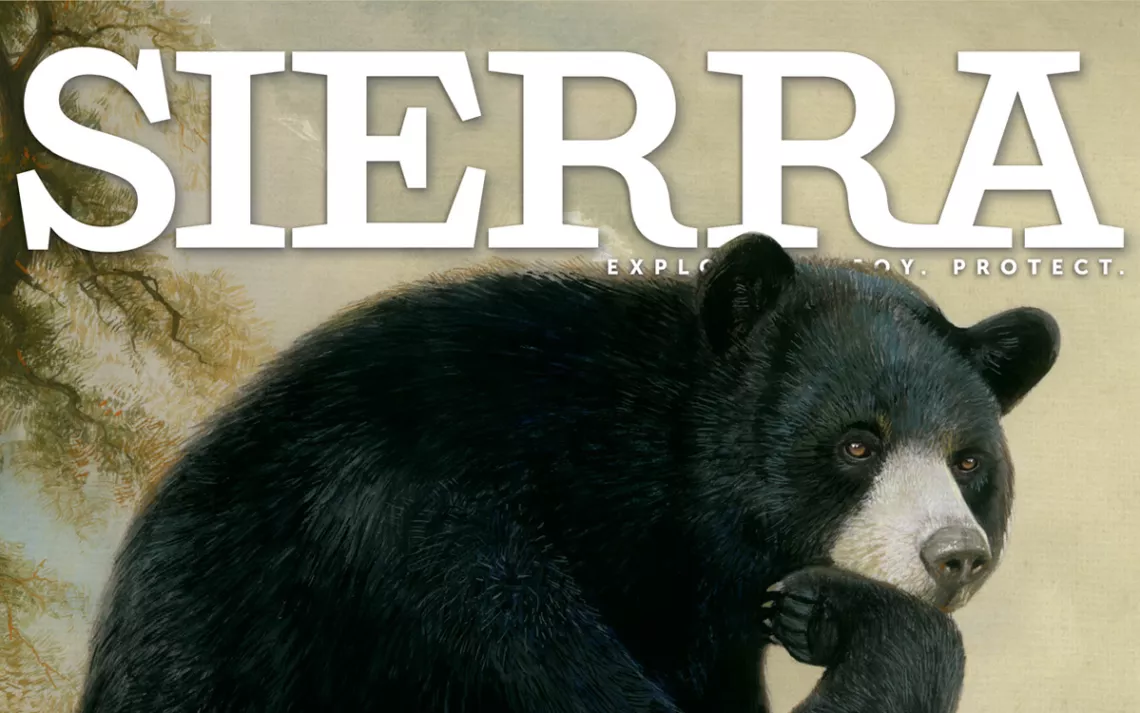Animals Are Persons Too
An insistence on the worth of every animal matters more than ever

Like many magazines, Sierra relies on The Chicago Manual of Style to ensure that we're following the highest standards of grammar. Among its thousands of entries, Chicago contains some prescriptions for the use of relative pronouns. Who normally refers to a person. Which normally refers to an animal or thing.
Perhaps this distinction between people and animals seems natural. It's worth considering, though, that language has conditioned us to accept a hierarchy in which animals aren't just different from but also lesser than. Humans are beings, while animals are equivalent to things. Maybe this hierarchy is, more accurately, a shallowness. After all, for much of our species' history, many cultures viewed other animals as cousins and kin. As the Potawatomi biologist Robin Wall Kimmerer writes in her wondrous book Braiding Sweetgrass, most Indigenous languages "use the same words to address the living world as we use for our family." This "grammar of animacy," she argues, can help humans to see ourselves "as a member of the democracy of species."
Now, some science is confirming this Native wisdom. In "Does a Bear Think in the Woods?", Brandon Keim reports on the wave of new research establishing that a range of species⎯from magpies to elephants to great apes⎯are smarter and more emotionally sensitive than once believed. Among the beasts that appear to be especially clever is the common black bear. It turns out that bears are highly self-aware and communicative and have enough social sophistication to engage in altruism. Keim wonders, "Could it be that much of North America is populated by hundreds of thousands of exceptionally intelligent nonhuman beings?"
The recent research about the cognitive abilities of other species is awesome. But our circle of concern shouldn't be circumscribed by measures of consciousness; all critters deserve consideration, regardless of how smart they may be. Or, as Keim puts it, "compassion isn't contingent on intelligence."
This ideal of a human obligation to other animals appears in at least one place in US law: the Endangered Species Act. Established with overwhelming bipartisan support 45 years ago, the act is perhaps the most ecologically radical of American laws, in that it assumes the importance of all creatures. In "What the World Knows", Rachel Nuwer reminds us that the Endangered Species Act protects "not just the big and beautiful: For every whooping crane, red wolf, and grizzly bear listed, there are many oyster mussels, Wyoming toads, and St. Andrew beach mice."
An insistence on the worth of every animal is as important as ever, especially as some environmentalists retreat into the rhetoric of "ecosystem services"⎯the idea that we should measure nature's value by the benefits it provides to human civilization. In this thinking, a wetland is valuable because it can blunt the force of a storm swell; a bumblebee is appreciated for its labor in pollinating our crops. But wild nature and wildlife also have intrinsic value; a bear is its own being.
The fresh findings about animal cognition bring new depth to the old law. They offer an opportunity to recommit to the ideals that have long animated the environmental movement. Maybe it's time, then, for Sierra to ditch the which for the who and to change the way we write about animals. In the process, we might also update the way we think about them.
This article appeared in the March/April 2019 edition with the headline "Animals Are Persons Too."
 The Magazine of The Sierra Club
The Magazine of The Sierra Club



